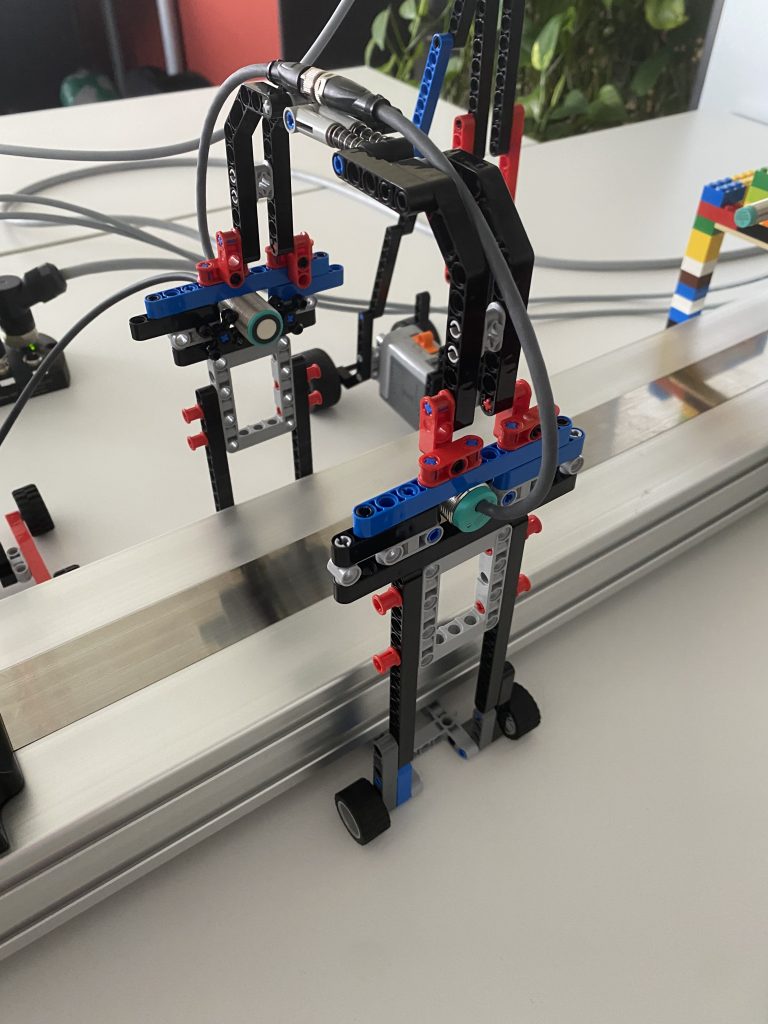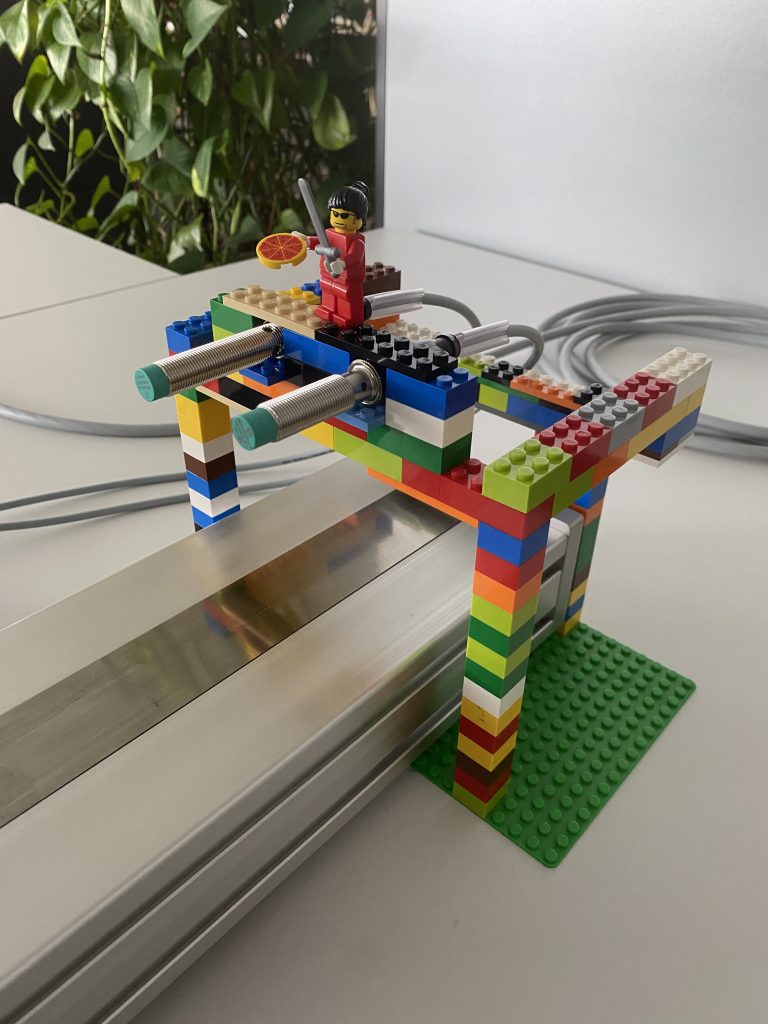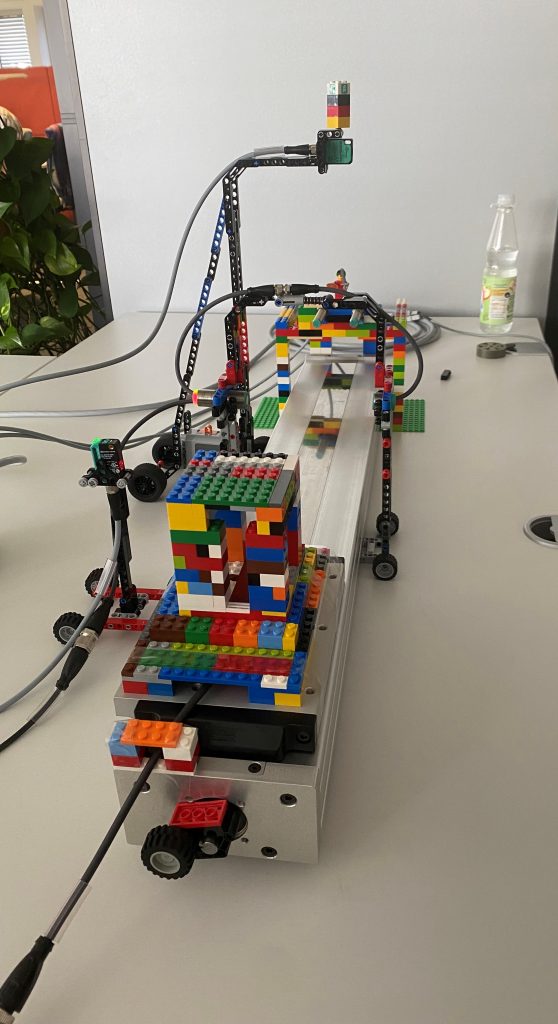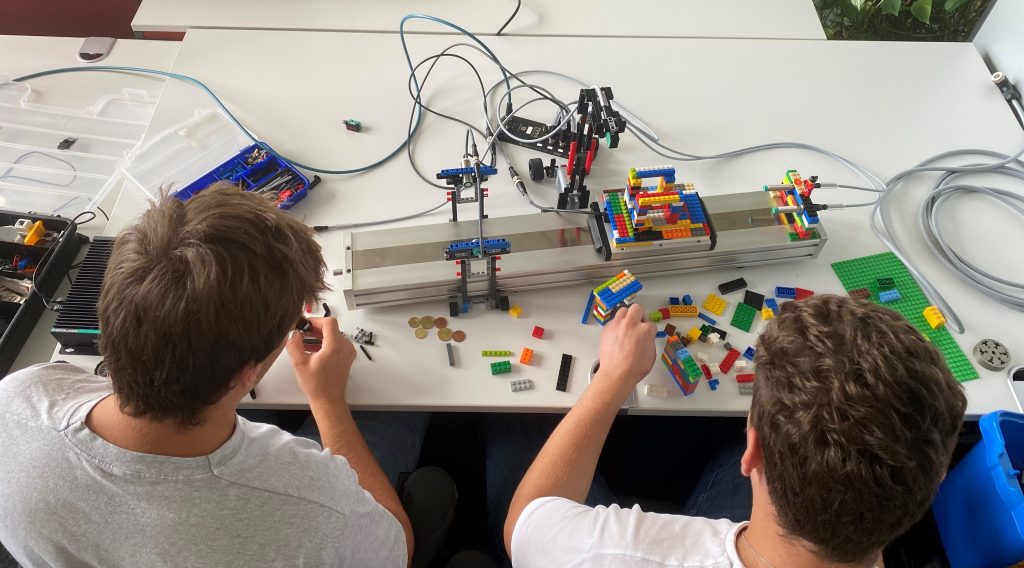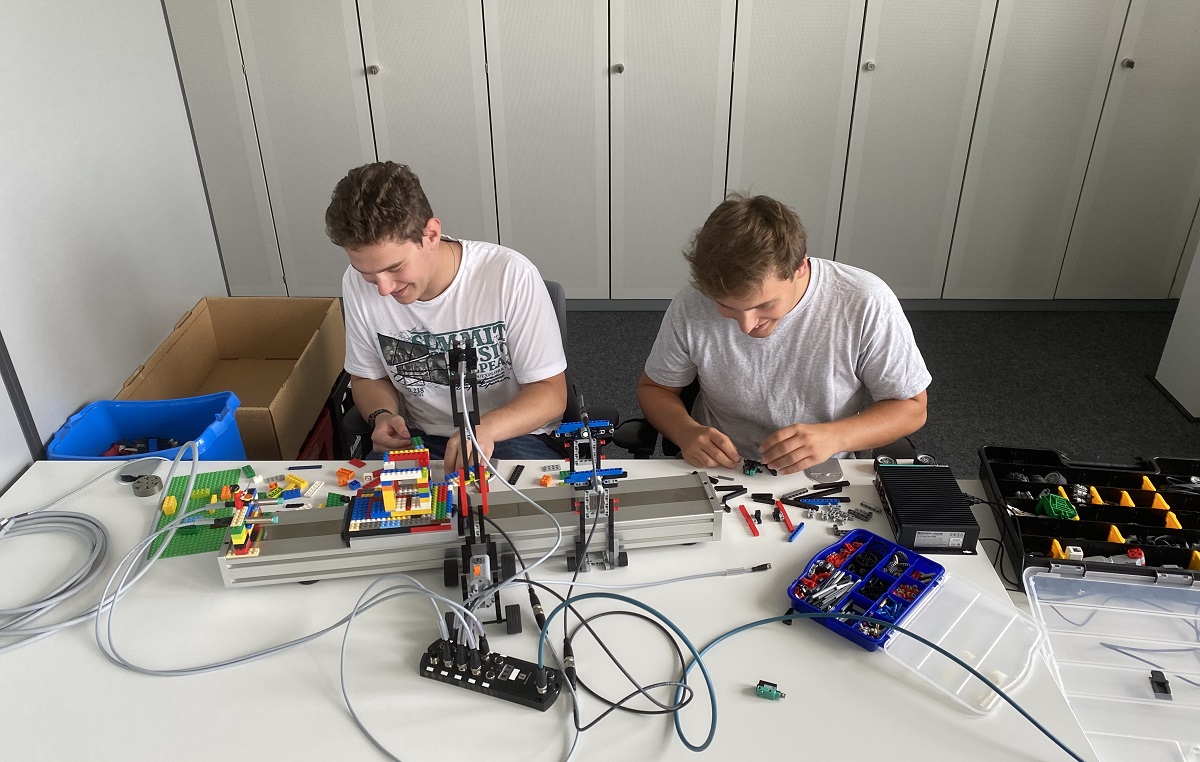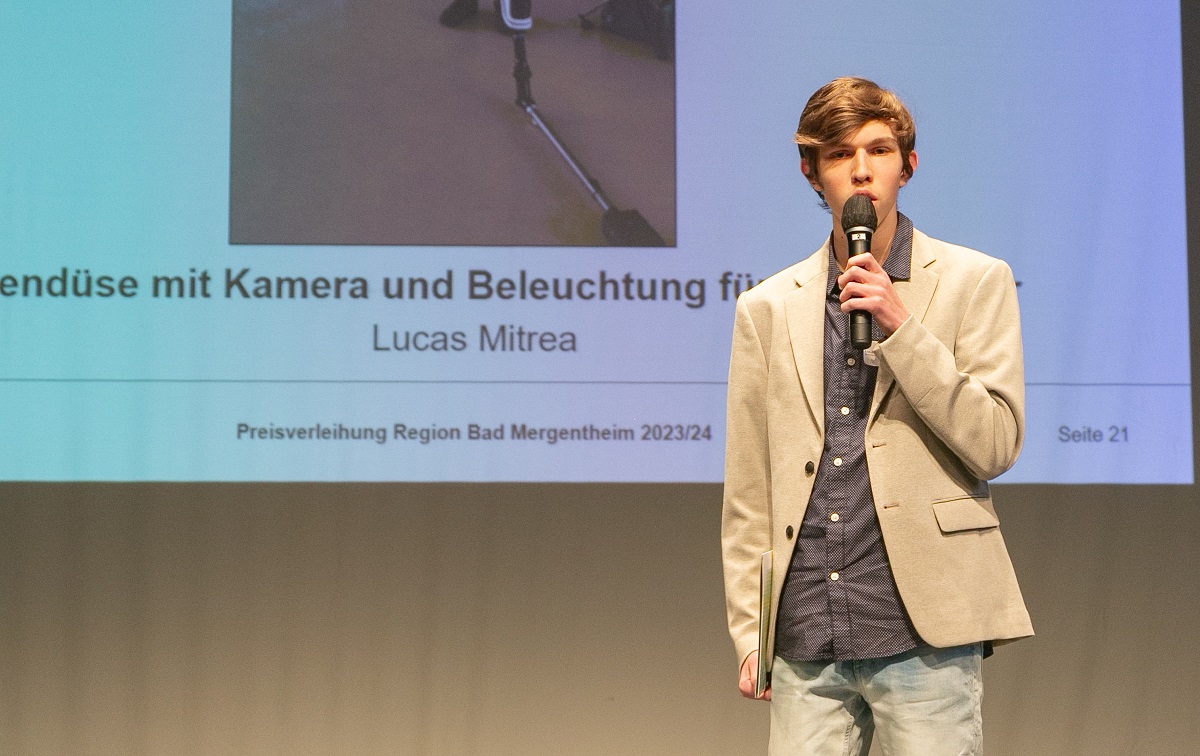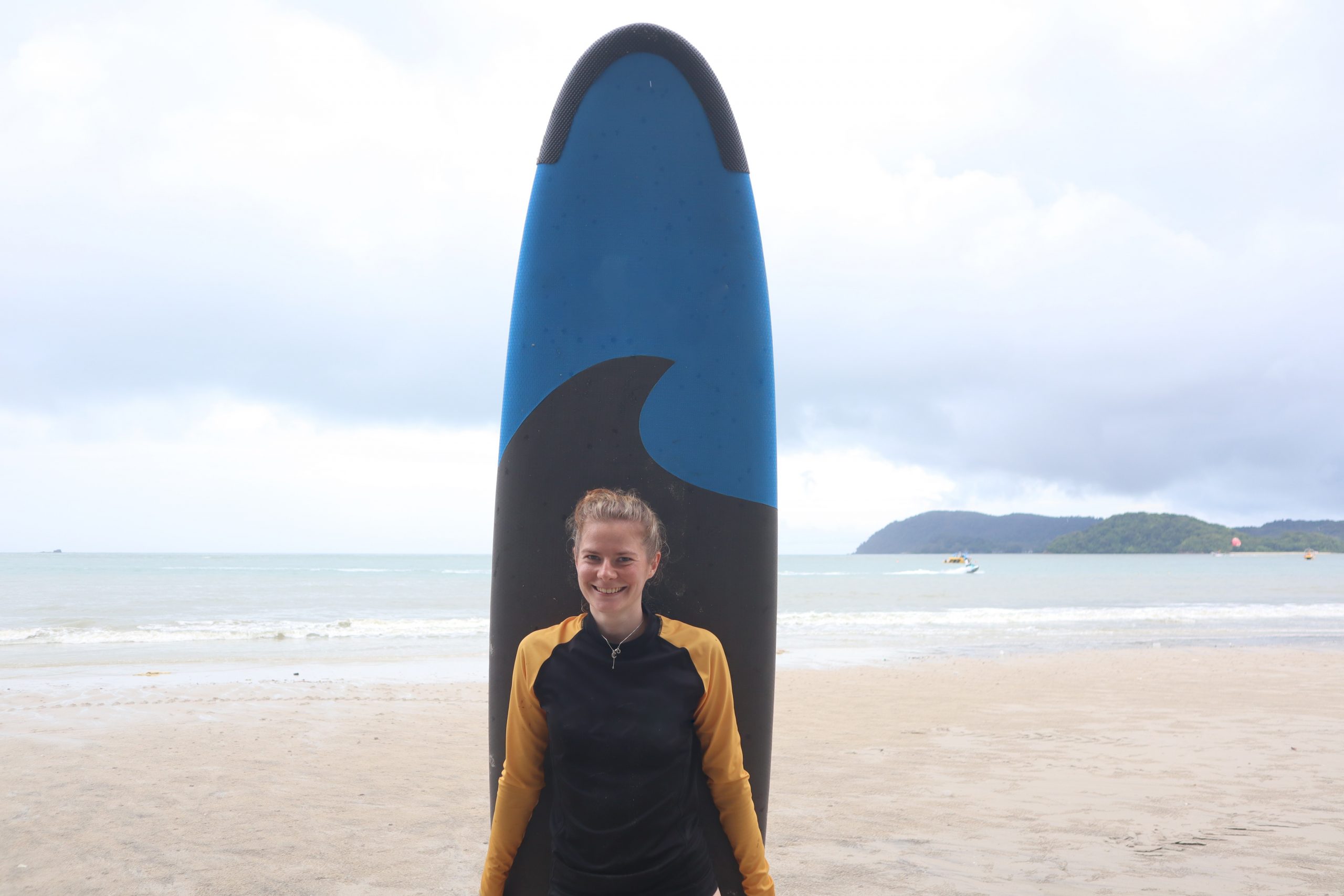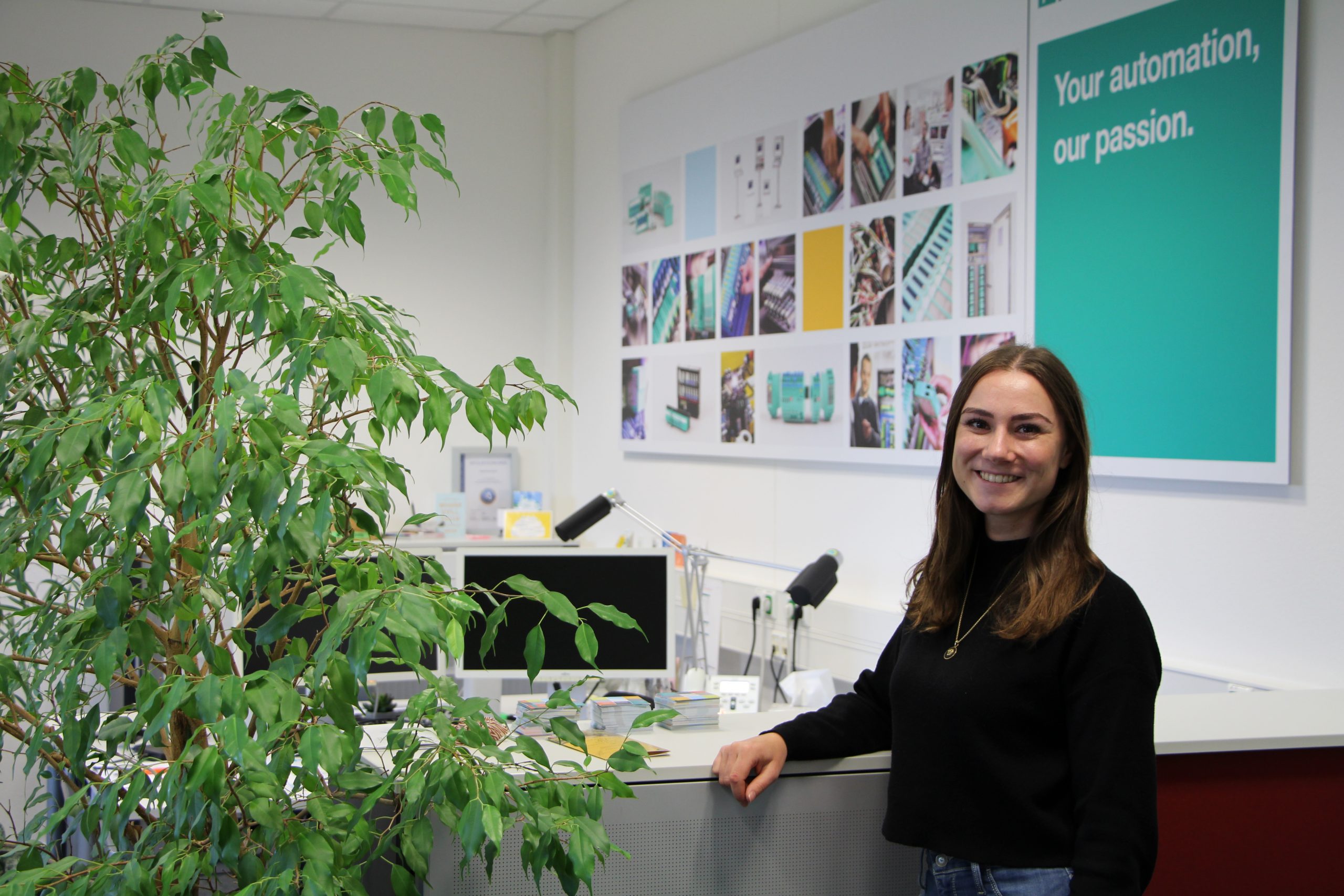Can you imagine building things with Lego bricks during your studies? Aaron and Fabian did exactly that. They are studying electrical engineering at Pepperl+Fuchs and spent their second practical phase in the Factory Automation (FA) sales department. During this time, they worked on a practical project. The aim was to build a compact exhibit covering as many products in the area as possible. In the interview they tell us more about it.
Hello and thank you very much for your time. You are studying electrical engineering and have just spent your second practical phase in FA sales. How was it?
Aaron: We had a great time in the department. At the beginning, we familiarized ourselves with many other Pepperl+Fuchs products. We also got to know various colleagues and, of course, found out what the everyday life of a sales employee is like. At the same time, we were given a practical project, which we continued to work on.
What is the practical project about?
Fabian: The aim of the project is to build an exhibit that is so compact that it can be transported easily, for example to the customer. At the same time, it should show as many Pepperl+Fuchs products as possible. We took over the project from a student who was in the department before us. He had developed a concept around a linear axis. The circular movement generated by a motor is converted into linear movement along the axis. In our case, this involves transporting a “cube”, simulating a product on a production line. Six different sensors react to the moving cube. For example, the height of the cube can be measured by a built-in ultrasonic sensor, and the linear axis can stop if the cube is too high for further stations.
That sounds exciting. What steps did you have to take?
Aaron: Initially, we focused on finding the right sensor technology and, with the help of our colleagues from the exhibition stand construction department, procured a linear axis. We then realized that a linear axis with sensors also requires a suitable controller, suitable brackets and an actuator in the form of a motor. Once we had the sensors and the linear axis on site, Fabian came up with the idea of using Lego bricks to put our theory about possible mounts and fastenings for the sensors into practice.
Fabian: Yes, this allowed us to eliminate sources of error before taking care of the final brackets. Once the exhibit with the brick mounts was ready, we started creating the final mounts. These had to be connectable to allow compact transportation and quick installation on site. Our brackets were therefore similar to Lego bricks. To maximize flexibility, we opted for 3D models. I had already had experience with 3D printing in the private sector. This allowed us to replace the temporary brackets quickly and efficiently.
And now you are also passing on the project?
Aaron: Exactly, we’re now going back to university and then we’ll move to another department. We’ve finished the 3D-printed objects, so they’re ready for use. Now, the motor we selected, a controller, software for the project and a means of transporting the exhibit are still needed.
What did you particularly enjoy?
Fabian: “Fiddling around” with the building blocks was fun and challenging at the same time, and getting to know and then working with the CAD program was particularly exciting and instructive. We also learned a lot about the various sensors by Pepperl+Fuchs.
Were there any challenges?
Aaron: Yes, there were actually some aspects that challenged us more than we initially thought. For example, choosing the motor was extremely difficult as we weren’t really familiar with it. We made lots of phone calls to external companies and wrote emails to find the perfect actuator for our application. There were also challenges working with and making major adjustments to the cube, as six different sensors had to react to it and, for example, at one point the cube had to be relatively narrow but still cube-shaped.
Fabian: The long search for the right linear axis and controller also cost us a lot of time because we didn’t want to order the wrong one in order to minimize unnecessary costs for the project. When creating the brackets, we realized that we had to pay closer attention to the length of the cables, which would have led to problems and additional expenses without the building blocks. We are definitely looking forward to seeing how the project progresses and will keep following it! 🙂
Impressions of the project
